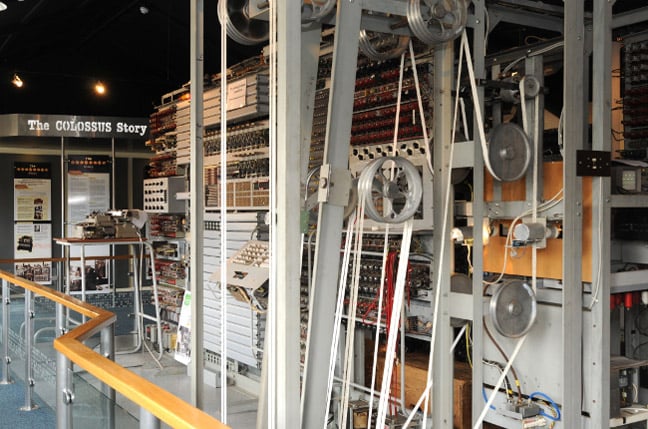The National Museum Of Computing Reboots Bletchley Park's H Block
The National Museum of Computing has unveiled renovations to keep out the rain and smartening up H block as celebrations take place to mark the 80th anniversary of the Colossus II computer.
The National Museum of Computing occupies Block H at Bletchley Park in the UK, and the building was first made ready for occupation on September 17, 1944. An annex to the now-demolished Block F, Block H was designed to accommodate six Colossus II computers and is notable for being one of the first constructed specifically to house electric computers.
The Colossus was constructed specifically to help decipher the Lorenz-encrypted (Tunny) messages sent between Hitler and his generals during World War II. The museum notes that the "information gleaned from the decrypted messages is widely acknowledged to have shortened the war by many months, saving tens of thousands of lives."
As for Block H, it could be regarded as one of the first purpose-built datacenters.
The years have not been kind to the building, and The Register was invited to attend a celebration marking more than half a million pounds of renovation to the structure, which included fixing the roof to remove the need to scramble for buckets every time it rained.
The museum houses a working replica of the Colossus II, installed where one of the original and long-since dismantled machines sat. The machines were originally built between 1944 and 1945 by General Post Office (GPO) engineers to the design of Tommy Flowers, and after World War II, H block was used for training by the GPO. A large chunk of funding for the work came from the Post Office Remembrance Fellowship.
Along with the Colossus II replica, the museum is also currently hosting an exhibition documenting the development and operation of the hardware, with audio of the stories of the people involved and artifacts to see.
A little more in living memory is the exhibition marking the inception of Digital Equipment Corporation's presence in the United Kingdom, replete with working PDP and VAX computers for the curious and the museum's usual complement of enthusiastic volunteers to demonstrate the computers.
While the Colossus replica won't be going anywhere soon, the Digital exhibition will close around February next year ahead of a move to a museum in Reading. However, there are plans afoot to rejig the large systems gallery to accommodate more DEC hardware, according to the museum's director, Jacqui Garrad.
- ZX Spectrum: Q&A with some of the folks who worked on legendary PC
- UK's National Museum of Computing asks tunesmiths to recreate bleeps, bloops, and parps of retro game music
- El Reg visits two shrines to computing history as the UK lifts coronavirus lockdown
- The National Museum of Computing flings opens its non-virtual doors
The large systems gallery is currently home to, among other things, a considerable amount of ICL hardware, intended to show what a room full of mainframes might have looked like in the 1970s, including a gloriously orange terminal running Colossal Cave Adventure.
The National Museum of Computing and its vast array of artifacts, many of which remain up and running, is an essential stop for any enthusiast, even if it is to show a skeptical youth that "this is what we worked on, back in the day."
The renovation of the roof of the Tunny and Colossus galleries, along with a new meeting room, means the institution and the items within it should continue to be accessible for a good few years to come. ®
From Chip War To Cloud War: The Next Frontier In Global Tech Competition
The global chip war, characterized by intense competition among nations and corporations for supremacy in semiconductor ... Read more
The High Stakes Of Tech Regulation: Security Risks And Market Dynamics
The influence of tech giants in the global economy continues to grow, raising crucial questions about how to balance sec... Read more
The Tyranny Of Instagram Interiors: Why It's Time To Break Free From Algorithm-Driven Aesthetics
Instagram has become a dominant force in shaping interior design trends, offering a seemingly endless stream of inspirat... Read more
The Data Crunch In AI: Strategies For Sustainability
Exploring solutions to the imminent exhaustion of internet data for AI training.As the artificial intelligence (AI) indu... Read more
Google Abandons Four-Year Effort To Remove Cookies From Chrome Browser
After four years of dedicated effort, Google has decided to abandon its plan to remove third-party cookies from its Chro... Read more
LinkedIn Embraces AI And Gamification To Drive User Engagement And Revenue
In an effort to tackle slowing revenue growth and enhance user engagement, LinkedIn is turning to artificial intelligenc... Read more


